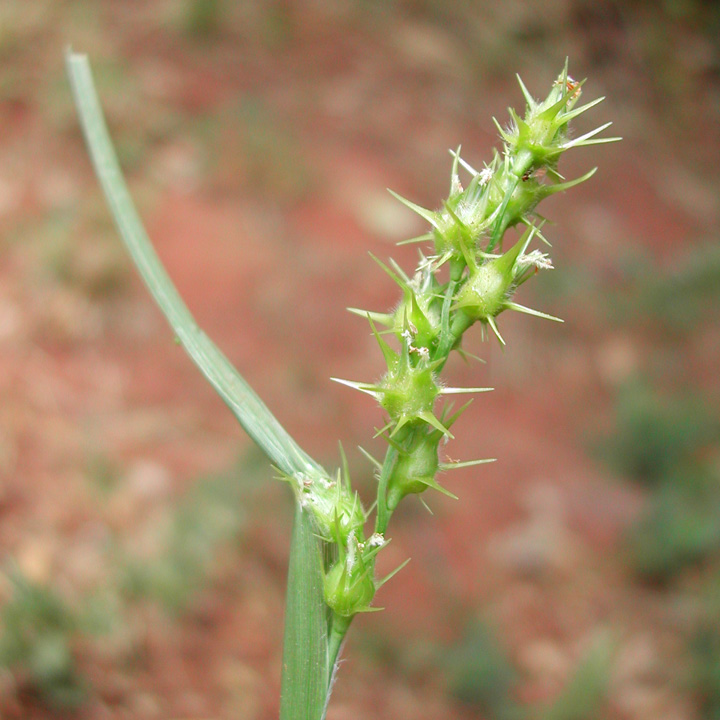|
Family: Poaceae |
Spikelets lance-oblong, usually dorsally compressed, sessile, with 1 perfect terminal fl above a neuter or staminate floret; glumes membranous or hyaline, the first 1- or
3-veined and equaling to much shorter than the 1-7-veined second one, or the first glume obsolete; sterile lemma 3-7-veined, about as long as the fertile one, with a well developed palea; fertile lemma about as long as the spikelet, membranous, 5- or 7-veined, equaling and partly enclosing its palea; 1- several spikelets collectively enclosed (or the tips exserted) in a bur of concrescent, barbed or scabrous spines or bristles, the burs sessile or nearly so on a slender rachis, forming a solitary, spike-like panicle with the axis usually prolonged into a short point; grasses with solid culms, compressed-keeled sheaths, and mostly flat lvs, the ligule reduced to a ciliate rim. 20, widespread, mostly in warm reg. Two spp. of Tragus are rarely found in our range, especially on ballast and about wool mills. The bur, instead of being composed of concrescent branchlets, as in Cenchrus, is composed of the enlarged second glumes, which are uncinate-spiny. T. racemosus (L.) All. has the second glume 3.6-4.5 mm, whereas T. berteronianus Schult. has it 2.3-3 mm. Gleason, Henry A. & Cronquist, Arthur J. 1991. Manual of vascular plants of northeastern United States and adjacent Canada. lxxv + 910 pp. ©The New York Botanical Garden. All rights reserved. Used by permission. |


